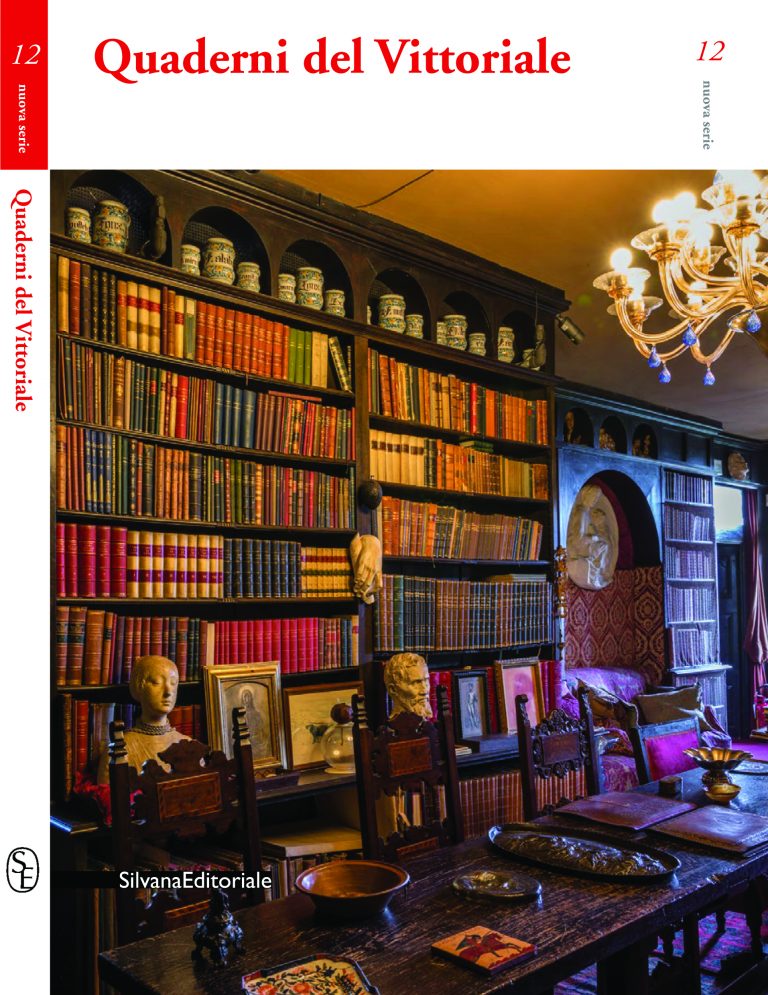Quaderni del Vittoriale. Nuova serie, n. 12

Abstract
“Quaderni del Vittoriale”. Nuova serie, n. 12
Studi e letture / Studies and readings
Gabriele d’Annunzio: dialogo con l’architettura / Gabriele d’Annunzio: a dialogue with the architecture
Raffaele Giannantonio
L’autore esamina nel dettaglio le descrizioni delle architetture e dei monumenti contenute nelle opere in prosa e nei componimenti poetici di Gabriele d’Annunzio: da Primo vere a Maia ed Elettra, dai Taccuini al Notturno. Si sofferma inoltre sulle battaglie compiute dal Poeta per la salvaguardia di quelli che in seguito diventeranno gli odierni “Beni culturali”.
The author examines in details the architectural and monumental descriptions contained in the proses and poems by d’Annunzio: from Primo vere to Maia and Elettra, from the Taccuini to the Notturno. He also lingers on the battles engaged by the Poet to safeguard what nowadays we call “Cultural heritage”, a concept not yet developed at the time.
L’ultimo d’Annunzio e l’Indice dei libri proibiti. Le condanne al Libro segreto e Solus ad solam / The last d’Annunzio and the Index of forbidden books. The judgments against the Libro segreto and Solus ad solam
Matteo Brera
Dopo due precedenti saggi riguardanti le opere di Gabriele d’Annunzio messe all’Indice e le vicende connesse, il saggista si dedica all’analisi dell’ultima procedura di condanna intentata dal Sant’Uffizio nei riguardi del Libro segreto (1935) e del Solus ad solam (1939), quest’ultimo pubblicato dopo la morte del Poeta. Nel caso del Libro segreto la condanna fu “per direttissima” adducendo le solite accuse: immoralità e blasfemia.
After two previous essays concerning the works of d’Annunzio added to the Index of forbidden books and the related events, this time the article’s author analyses the last procedure of conviction carried out by the Holy Office towards the Libro Segreto (1935) and the Solus ad solam (1939), which was pubblished only after the Poet’s death. In the case of the Libro Segreto, the summary judgment’s reasons were, once again, the accusations of immorality and blasphemy.
Rapsodia satanica / Rapsodia Satanica
Erika Baini
Il film muto del 1917 Raposodia satanica di Nino Oxilia contiene, secondo l’autrice, alcuni riferimenti alle opere di Gabriele d’Annunzio: dal Poema paradisiaco al Forse che sì, forse che no.
According to the author of the essay, the silent movie Rapsodia satanica (Satan’s Rhapsody), directed by Nino Oxilia in 1917, contains references to d’Annunzio literary works: from the Poema paradisiaco to Forse che sì, forse che no.
L’Italia dell’attesa / Italy still waiting
Augusto Traina
Augusto Traina spiega l’evoluzione della situazione politica e sociale in Italia intorno 1921 partendo dall’analisi di tre rare cartoline, facenti parte della sua collezione, illustrate da Anichini e Rotuma e realizzate in occasione del settimo centenario dantesco.
Augusto Traina explains the evolution of the political and social situation in Italy around the year 1921. He starts his analysis from three significant postcards – belonging to his personal collection – designed by Anichini and Rotuma for the seventh centenary of Dante’s death.
Nella “Fabbrica” del Vittoriale / In the Vittoriale’s “Factory”
Lamine della lucenza. Le Targhe di Mario Buccellati per Gabriele d’Annunzio / Lamine della lucenza. Mario Buccellati’s plaques for Gabriele d’Annunzio
Paola Goretti
Perché Mario Buccellati realizzò le cosiddette “Targhe di Fiume” e quelle con i motti dannunziani? Fu il Poeta a commissionarle oppure fu un suo personale esercizio di stile? Paola Goretti, storica dell’arte, ricostruisce con maestria la vicenda di ogni singola targa, soffermandosi su ognuna con dovizia di particolari.
Why Mario Buccellati realized the so called “Fiume’s Plaques” and the others plaques with the mottos created by d’Annunzio? Was the Poet himself to order the commission, otherwise was a personal stylistic exercise made by the goldsmith? The art historian Paola Goretti masterfully tells the story of every single plaque, by describing them with considerable paid attention to details.
L’aquila ritrovata. Storia ed enigmi di un reperto fiumano al Vittoriale / The discovery of the eagle. Stories and enigmas around a Fiume relic at the Vittoriale
Federico Carlo Simonelli
Nel Cortiletto degli Schiavoni del Vittoriale è stata murata una delle due teste dell’aquila che si trovava sulla torre civica di Fiume. Perché una di queste giunse al Vittoriale e divenne uno dei cimeli del Comandante? L’autore del saggio ripercorre passo dopo passo la storia di questa celebre effige che divenne un simbolo dell’occupazione fiumana.
One of the two heads belonging to the eagle that used to stay on the top of the Fiume City Tower, has been walled in the Cortiletto degli Schiavoni at the Vittoriale. Why, when one of these heads arrived at the Vittoriale, it became one of the Commander’s relics? The author of the article retraces step by step the story of this illustrious effigy, which has been turned into a symbol of the city’s occupation.